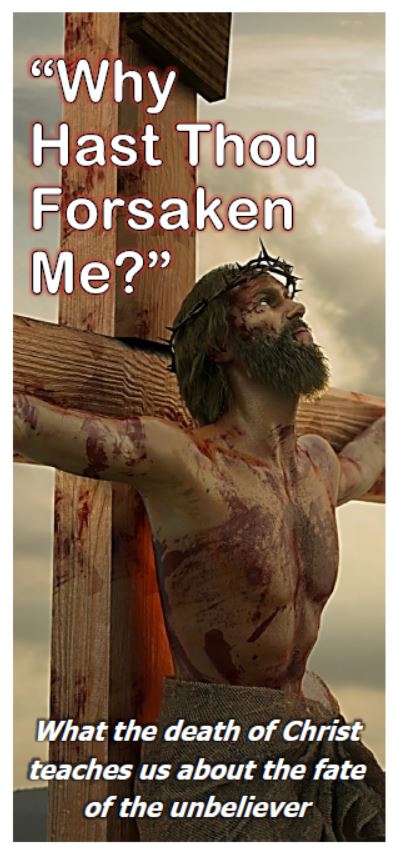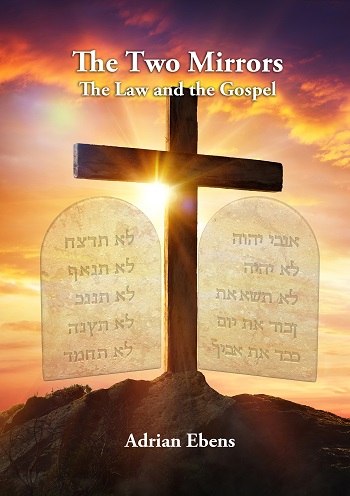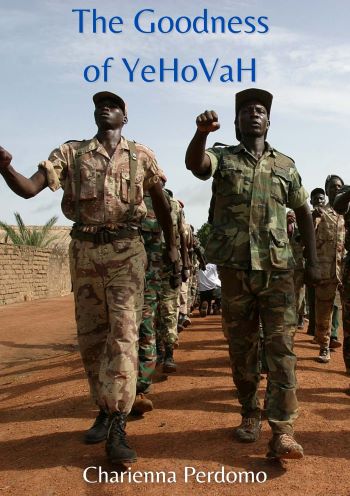Unity and Diversity of Trinitarian perspectives within Adventism 1
Much has been written about the history of the trinity doctrine within Adventism. Very little has been written about the current climate of Trinitarian/non-trinitarian thought as of the present (2010). The purpose of this article is to give a brief summery of the Trinitarian and non-trinitarian spectrum from sources within and without denominational Adventism.
It should be noted that the formulation of the Trinity doctrine represents an anomaly for researchers and church historians. Why? Because this teaching was not hammered out through diligent Bible study from church leaders and members as was its other foundational teachings. Rather, it was introduced by certain church leaders through published books, articles and EGW compilations over many decades of time. Slowly and gradually the "Trinity" became accepted by "common consent." This is why church historians cannot point their finger at a specific date, or Bible conference, and say "this is when the Adventist church accepted the Trinitarian doctrine." Rather, they speak of transitional periods of time, many decades long. (i.e. Froom, Movement of Destiny, 1971 pp 75-78; Jerry Moon, The Trinity, 2002 pp 191-202; Murlin Burt, Ministry, Feb. 2009.)
The first time the Trinity doctrine was formally discussed and debated was the 1919 bible conference. No decision was made for or against this teaching during that meeting. Some scholars point to 1946 as the year the Adventist church "officially" accepted Trinitarianism. During the fifteenth meeting it was voted "That no revision of this Statement of Fundamental Beliefs [1931 by FM Wilcox], as it now appears in the Manual, shall be made at any time except at a General Conference session." [emphasis supplied]. What Froom and modern writers fail to mention is that the entire session was about revisions of the church manual. There was no study, no debate, no questions regarding the Trinity/non-trinity whatsoever! (Froom, MOD, 419; The Trinity, The Trinity, Whidden, Moon, Reeve, pp 200,201,203.) The second time the Trinity doctrine was formally discussed was during the 1980 G.C. session in Dallas Texas. The statement regarding the Trinity was drafted by Fritz Guy. Concerns were raised that the initial draft of the statement, and the entire changing of the draft by Andrews scholars did not represent the belief of the world church. (see Fred Veltman, http://www.spectrummagazine.org/node/1681)
"During discussions of the paragraphs on Father, Son and Holy Spirit, it seemed, at times, as though we were going one-by-one through the entire sequence of heresies that had confronted the early church." (ibid) When legitimate questions were raised during the session, Neal Wilson squelched all discussion. “G.N. BANKS: Is our position as fundamentalist-believers that the Godhead is a unit of three equal members, pre-existent to all things, and that there was a period when there was no Sonship involved-just three members of the Godhead? Is that our position? Did the term Father come into play only in relationship to the Sonship experience as a result of sin and the need of the atonement? NEAL C. WILSON: Well, you are getting into an area that could lead us into certain Arian complications... W. DUNCAN EVA: Mr. Chairman, we did not want to get into those areas that Elder Banks has talked about... " (view it here)
Also, note the concern that the statement regarding the Trinity is actually Tri-theistic. "W. R. LESHER: I am concerned about words and phrases that would seem to limit God or to change the view of God that is given to us in Scripture. One of these is the suggestion that was made that we not use the word He. I presume that the speaker was referring to the use of 'They' in paragraph 2. And, of course, the statement of Scripture is that 'The Lord our God is One Lord.' And to speak of 'They' or some other pronoun than 'He' would make us tritheist, instead of believing in one God...God is a mystery. And we do not know in what ways that unity might exist other than in purpose. There are some ways in which we can seem to say that God is not a unity. But even then we are not sure what we are talking about. The idea of three Beings that are One is a mystery, and it seems to me that we should not try to remove all of that mystery from the statement."
Although serious questions were raised regarding the Trinity, the 1980 statement of beliefs was pushed through and voted upon. In 1988, the book entitled, “Seventh-day Adventists Believe...A Biblical Exposition of 27 Fundamental Doctrines” was written as a detailed exposition of the 27 fundamental beliefs, including the Trinitarian doctrine. Research needs to be done regarding the causal relationship between the Trinitarian/Tri-thism premise, and its relational effect upon ALL other Adventist beliefs.
The third time the Trinity doctrine was formally discussed by church representatives was during the 2006 Trinity Bible Symposium in Collegedale, Tennessee. Undoubtedly, this was the first time in the history of the church that Adventist leaders got together to study and discuss the Trinity doctrine in any great length or depth. Unfortunately, this study and discussion was almost entirely apologetic and defensive. In other words, "we have already made up our minds what we want to believe and now we will try to systematically prove it." Yet, the nagging question remains: if we have thoroughly studied our Trinitarian position and are secure with it, why be so defensive?
During the late 1980's and early 1990's some Adventist's began to protest the neo-Trinitarian position as stated in the 27 fundamentals. Gary Land observed that: "Toward the end of the 20th century, however, some Adventists--often called 'historic Adventists'--sought to revive the views of the denomination's founders, including their antitrinitarianism. In response, the church published The Trinity (2002) by Woodrow Whidden, Jerry Moon, and John W. Reeve..." (Gary Land, Historical dictionary of Seventh-day Adventists pg. 301) In response to this Adventist non-trinitarian resurgence Gerhard Pfandl published in 1999 "The Trinity in Scripture," (view here) and "The Doctrine of the Trinity Among Seventh-day Adventists" 2006 (view here).
Pfandl lists a number of Adventist Trinitarian apologetic authors which include: "The first comprehensive study of Arianism in the Seventh-day Adventist Church was Erwin R. Gane’s unpublished M.A. thesis, 'The Arian or Anti-Trinitarian Views Presented in Seventh-day Adventist Literature and the Ellen G. White Answer,' which was completed in 1963 at Andrews University. Others who have written on the topic since then include Russell Holt, 'The Doctrine of the Trinity in the Seventh-day Adventist Denomination: Its Rejection and Acceptance,' term paper, Seventh-day Adventist Theological Seminary, 1969; Merlin Burt, 'Demise of Semi-Arianism and Anti-Trinitarianism in Adventist Theology, 1888–1957,' research paper, Andrews University, 1996; John M. Fowler, 'In the Presence of Mystery,' Adventist Review, April 13, 1997, 16–19; Woodrow W. Whidden, 'Salvation Pilgrimage,' Ministry (April 1998): 5–7; Jerry Moon, 'Heresy or Hopeful Sign,' Adventist Review, April 22, 1999, 8–13. George R. Knight, A Search for Identity (Hagerstown: Review and Herald, 2000), 110–117. Because of a resurgence of anti-Trinitarian views within the church, two books on the Trinity have been published in recent years: Max Hatton’s book Understanding the Trinity (Grantham: Autumn House, 2001) does not address the Adventist situation, but focuses on the biblical material and responds to attacks on the doctrine of the Trinity. W. W. Whidden, J. Moon, and J. W. Reeve’s book The Trinity (Hagerstown: Review and Herald, 2002) has two chapters by Jerry Moon dealing with anti-Trinitarianism in Adventism." (view here footnote 1)
Now comes the interesting part. Pfandl, Moon, Knight and others imply that general unity exists upon the "Trinity" as stated and defined in the fundamental beliefs. Yet, nothing could be further from the truth. There are big, big, big differences of interpretation even among all who claim to believe and defend the Trinitarian perspective.
Lets start with Max Hatton. He wrote two books in defense of the Trinity doctrine (one for non-SDA, 2001; and one for SDA's, 2008). Max lives in Australia and his perspectives are widely accepted by Adventist leaders and members in that church division. To begin on a positive note, Hatton's position comes closest to creedal (nicea-325, constantinople-381) Trinitarianism by an Adventist writer (followed by Dr. Raoul Dederen and Ekkehardt Mueller). Other writers like Froom claim creedal adherence (QOD pp29-32), yet upon close inspection there are major differences. Secondly, he challenges all Adventists to "prove" the Trinity or non-trinity from Scripture alone.
Hatton writes "The following is perhaps the simplest definition of the Trinity I have seen: 'Within the one Being that is God, there exists eternally three coequal and co-eternal persons, namely, the Father, the Son, and the Holy Spirit.'...The Father, the Son, and the Holy Spirit all comprise the One True God." (The Trinity Doctrine for SDA, pp. 5, 47)
Hatton is a "consubstantial" Trinitarian. He does not believe that God has a physical body of any type. Some would accuse him of border-lining modalism (one being, three manifestations). Hatton would say that "God" is a complex unity of "one Being" and NEVER "three divine Beings" who are in unity. The emphasis is that God is "one Being," "one essence," and "one substance" while somehow manifesting Himself as three. (see here); (and here) Hatton accuses the Historic Adventist pioneers and modern non-trinitarians of heresy: "Do not forget either that their teaching is a heresy because it causes them to have two gods and this is a miniature form of Polytheism which is paganism. " (The Trinity Doctrine for SDA, pg. 27)
Ironically enough, Hatton also accuses his other Trinitarian brethren from the North American Division of a worse heresy: Tri-theism.
"I will recommend the study of my book Understanding the Trinity published in 2001...It is available from Adventist Book Centres. Very soon to be published is another book I have written, The Trinity Doctrine for Seventh-day Adventists...A Seventh-day Adventist Tritheistic Distortion of the Trinity: Some Seventh-day Adventists accept the full Deity of the Father, the Son, and the Holy Spirit but they do not accept that they all exist in the one Substance. They see each of them existing in the same sort of substance but try as they may they cannot avoid the charge of Tritheism. This is not the true doctrine of the Trinity. Maybe this is why I sometimes hear that we should not use the word Trinity but should rather refer to the Three Persons as the Godhead. Call it what you like it is not the true teaching of Scripture to have Three separate beings combined in a unity of character, love and purpose (and this and that) as the True God. I cannot escape the conclusion that three separate beings of separate substance are nothing less than three separate gods – Tritheism...It seems to me that Tritheism is really a form of Polytheism and I am unable to offer acceptance to either of them. I have noticed for years that many Adventists who have said anything to me on the Trinity are really Tritheists. These folk have never studied the matter really, they just come away from Scripture knowing that the Father, the Son, and the Holy Spirit are all God and yet there is only one True God. They have accepted the idea that they are united in love and goals etc., and this makes them a Trinity they conclude. They have read similar statements in some of our literature. Sadly I must say that they are mistaken. This concept is not the Biblical doctrine of the Trinity. Our Church members need to be much better educated on this vital subject...
Jerry Moon, The Quest for a Biblical Trinity, Journal of the Adventist Theological Society, Vol. 17, Number 1, Spring 2006, writes concerning the Heavenly Three from a study of Ellen G. White writings, on pages 143, 144:
"The concept of God that is explicit in her later writings portrays the Father, Son, and Holy Spirit as three eternal Persons of intellect, will, and emotions who are united in character, purpose, and love. There is no conflict among them, no working at cross-purposes, no competition, not even disagreement. Thus they are not three gods (as in polytheism or tritheism), but One. Furthermore, their unity is not a mathematical paradox, but a relational unity, analogous to the unity seen in a good marriage, where husband and wife are united in an ever-growing oneness, but without negating their individuality. I have enormous difficulty in even seeing possibilities in this kind of reasoning and in adopting this type of belief. I cannot call it the Biblical Trinity doctrine. The Trinity doctrine requires a physical oneness and not just a relational oneness. It is difficult enough believing in a Divine Being who has always existed, many who have considerable intellectual capacity find this beyond their ability to accept. To say that there is One Divine Being is incredible enough, but to say that there are Three such Beings who are likeminded in all things and who have decided to cooperate in every possible way; stretches the credibility of such an assertion almost beyond acceptable limits..."
"It seems to me that Jerry Moon and others have maintained the view that the three Members of the Trinity are human like figures. That being so they can’t for a moment think of the Three being in the one Substance. No, they think of them being separate but being united in such things as character and purpose. This recent thought of mine has helped me a lot to understand the reason why some Adventists have a Tritheistic type Trinity...I have to also say that this type of Trinity does not come from a study of Scripture...I would like people who maintain this Tritheistic type of Trinity teaching to prove it from Scripture." Max Hatton (view here) Max Hatton makes some excellent points that shouldn't be discounted lightly. Firstly, ALL Trinitarian creeds speak of God as "one singular being" and Never as "three divine beings" who are united in whatever ways. Therefore, "three beings" in whatever form is Tri-theism and non-Trinitarian by creedal definition. So how do Whidden, Moon, and Reeve avoid the charge of Tri-theism (three Gods)? "Unlike the multiple gods of polytheism, the three persons of the biblical Godhead are profoundly united in purpose, mind, and character, to that despite Their individuality, they are never divided, never in conflict, and thus constitute not three gods, but one God." (The Trinity, pg.192) The implication is clear that the only way these three divine beings could become "three Gods" is if they were ever divided, or in conflict with each other. Everyone is entitled to their own opinions, yet this definition of Tri-theism is pure conjecture, speculation, made-up from thin air. Again, there is no known Trinitarian creed that says "three divine beings in unity" is not Tri-theism (or three Gods), but rather orthodox Trinitarianism. This definition is entirely unique with only Modern Adventism and Mormonism (view here).
If Max Hatton accuses Whidden, Moon, Reeve and others like minded with the heresy of Tri-theism; what heresy does Moon & friends accuse Hatton of?
"One aspect of the creedal Trinitarianism rejected by the pioneers was the somewhat curious statement that 'there is but one living and true God, everlasting, without body or parts'...The pioneers vigorously refuted this, citing several biblical passages that portrayed God as having both 'body' and parts' (Ex. 24:9-11; 33"20-23; John 1:18; Heb. 1:1-3; cf. Smith, State of the Dead, pp. 27-30)...James White had declared that 'this class can be no other than those who spiritualize away the existence of the Father and the Son, as two distinct, literal, tangible persons....The way spiritualizers...have disposed of or denied the only Lord God and our Lord Jesus Christ is first using the old unscriptural trinitarian creed'...Ellen White evidently agreed with her husband that Christ and the Father were 'two distinct, literal, tangible persons,'...Significantly, Ellen White condemns Kellogg's view of the Trinity in almost identical terms to those her husband James used in 1846 when he rejected the 'old unscriptural trinitarian creed' for 'spiritualiz[ing] away the existence of the Father and the Son, as two distinct, literal, tangible persons.'...Further, Ellen White claimed that in Kellogg's heresy she 'recognized the very sentiments' she had opposed among spiritualizing ex-Millerites in 1845 and 1846 (Selected Messages, book 1. p. 203). It implies that she associated the spiritualizing of the post-disappointment fanatics, the creedal teaching that God is formless and intangiable and Kellogg's impersonal concepts of God all under the general heading of 'spiritualistic theories' (ibid., p. 204)." (The Trinity, pp. 206, 207; 217, 218.)
Did you catch that? Hatton accuses Moon & friends of Tri-theism because they believe in three divine beings (two of which have bodily forms); And Moon & friends indirectly accuse Hatton of being a Trinitarian "Spiritualizer" because He doesn't believe God has a physical form or body. Again, while both authors accuse each other of damnable heresy, both books are presented to the world-wide Adventist church as teaching the "Truth" about the Trinity. Now that's irony!





